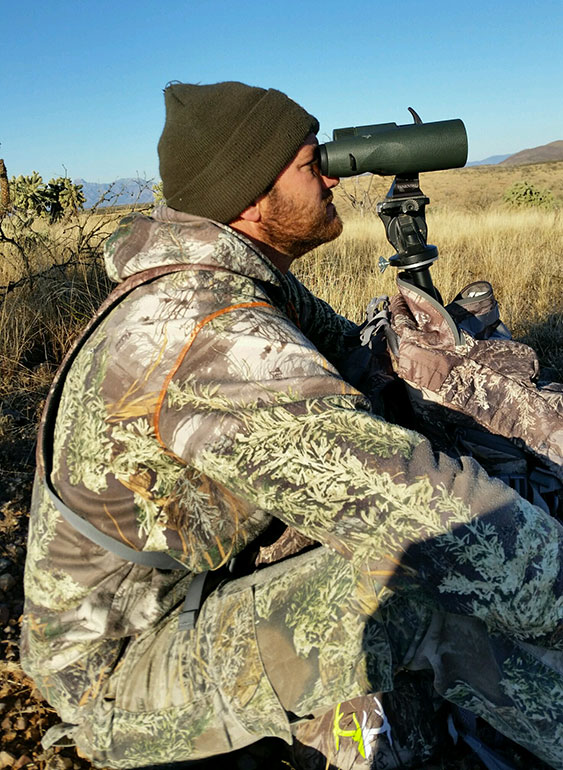SEPARATE YOURSELF FROM THE HERD
Long before the wackin’ and packin’ starts, we spend hours and hours in the hills. Scouting is essential if you are going to separate yourself from the herd. Even with all the advancements in technology that effect the way we scout, I still believe boots on the ground and eyes in the glass is the most effective way.
NOTHING BEATS HARD WORK
Trail cams can be beneficial. They have helped us know of specific animals and the size of those critters—but even with the knowledge that trail cams give us, we still have to put in the work to find and pursue trophy class animals.
Trail cams recently have sparked some heated discussion in my home state of Arizona. There is talk of putting rules in affect that will regulate how they are used. My opinion on that subject? I could care less if they did away with them. In the country we hunt trail cams can only do so much. We were taking trophy class animals long before we started using them.
Personally I miss the days where there was some mystery of what was out there. Now big animals have a target on them and the animal typically loses. As I look back on many of the large animals we have taken, very few of those successful hunts involved trail cams. Most had to do with good old-fashion hard work.

Hours behind the glass will always pay off.
FOLLOW THE SIGN
Some of the most effective scouting days are those that lead right up to the starting day of a hunt. This time is essential to being able to make a plan of attack going into a specific hunt. Time spent scouting does not always have to be putting your eyes on the game you’re hunting. I learned from a young age to follow the sign. Fresh tracks, droppings, rubs, and beds are all ways of knowing you’re on the game. Knowing how and what to do when you find the sign is the key!

Trail cams can help locate trophy class animals.

It still takes work and effort to get out and turn the animal up prior to the hunt.
THE KILL IS ICING ON THE CAKE
Part of the thrill and the enjoyment we experience when hunting has to do with the preparation that leads up to the hunt. That time spent in the field can often make or break a successful hunt. Remember, you don’t have to kill to make a hunt a success. I have always said that the kill is the icing on the cake—when your hard work pays off. But I have left many a hunt with nothing in the back of the truck, and still it was a success.
The kill is not important to me on the hunt. What is important is that our clients enjoy themselves—that they would return to hunt with us and that they might even tell a friend about us. If this takes place, then we have done our job. With 95% repeat clientele, it seems we are doing a pretty good job fulfilling expectations.

An example of successful scouting prior to the hunt. This bull was scouted and then found again the night prior to being taken opening morning.





